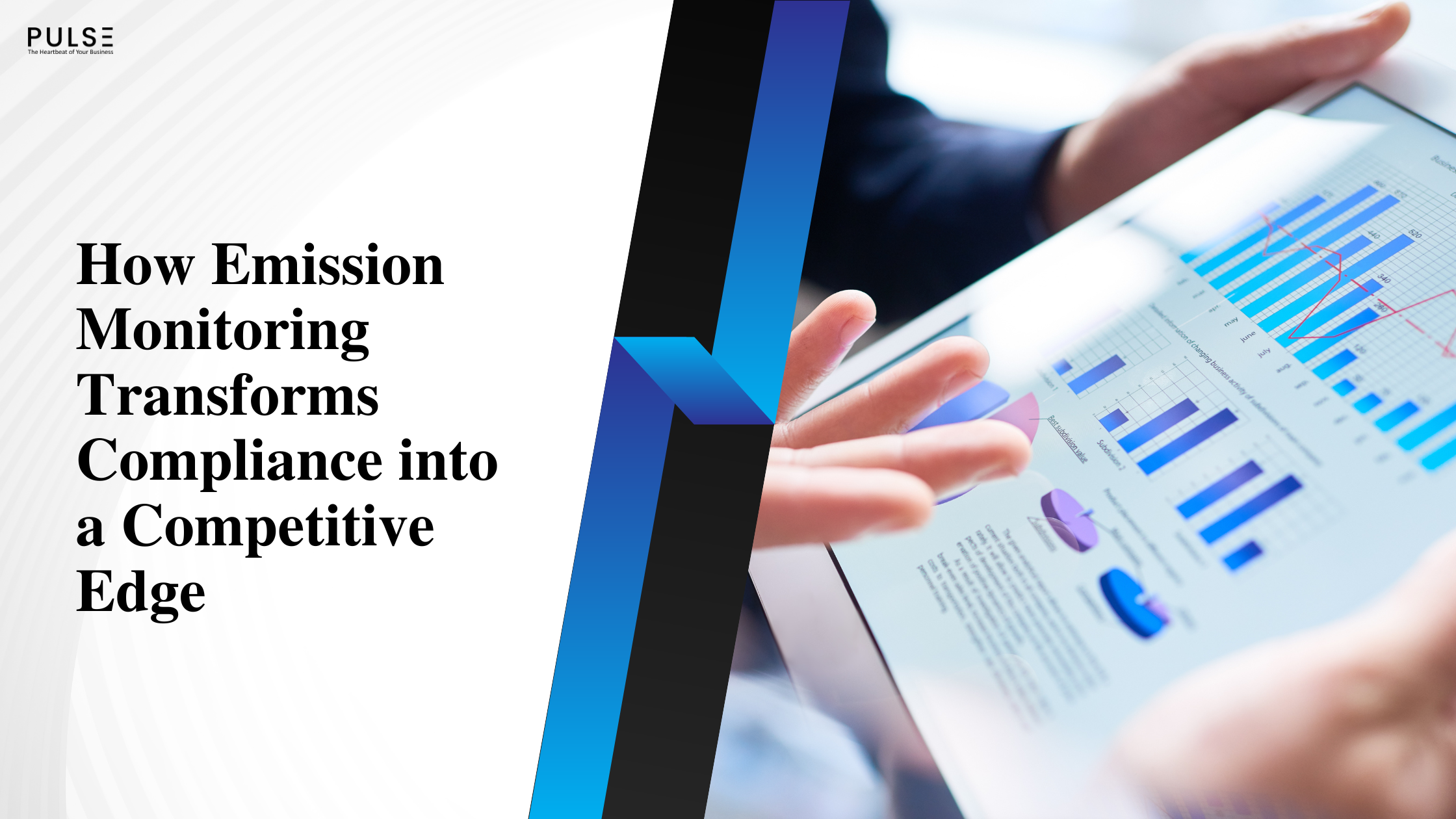In a world where sustainability is the hallmark of long-term success, companies can no longer approach emission monitoring as a box-ticking compliance exercise. Rather, visionary companies are making it a strategic differentiator — driving efficiency, profitability, and market leadership.
This guide explains how to transition from regulatory compliance to real-time emissions monitoring, unlocking measurable business value and future-proofing your business.
1. The Compliance Imperative: Why Emission Monitoring Matters
As environmental regulations tighten worldwide, governments and agencies now mandate accurate and transparent emissions data. From carbon taxes to ESG reporting frameworks, every business is expected to prove its environmental accountability.
Having a robust emission monitoring system in place guarantees:
- Compliance with sound waste management regulations, air quality legislation, and carbon disclosure requirements
- Effective tracking of carbon emissions from greenhouse gases and other harmful substances
- Evading expensive fines and loss of reputation
- Fair ESG reporting and investor trust
But real leaders don’t merely comply. They employ emissions monitoring software not only to satisfy regulations, but to build value.
2. From Data to Decision: Making Emissions Intelligence
Data collection is merely step one. The magic happens when companies convert emissions data into decision-driving intelligence using sustainability data analytics.
Current continuous emissions monitoring (CEM) systems provide:
- Real-time alerts for emission bursts or equipment malfunctions
- Predictive analytics to avoid non-compliance before it occurs
- Benchmarking tools to measure against peers and industry benchmarks
- Scenario modeling to consider alternative sustainability approaches
By incorporating emissions monitoring into current operations systems, companies achieve a 360° view of environmental performance — supporting wiser, data-based decisions.
3. Business Benefits: How Monitoring Develops Competitive Advantage
In addition to regulation, the advantages of emission monitoring emanate throughout operations, finance, and reputation.
a) Cost Efficiency and Operational Optimization
Precise emission information reveals inefficiencies — lost fuel, energy leakage, or failed machinery. Repairing these not only enhances compliance but also minimizes energy usage and maintenance expenses.
For instance, companies implementing sophisticated CEM systems have recorded up to 10% fuel savings and enhanced process stability.
b) Regulatory Preparedness and Risk Avoidance
Real-time monitoring protects your company from surprise transgressions. Through instant alerts and automatic reporting, you maintain regulatory compliance and audit readiness — with a transparent digital record of your emissions performance.
As regulations change, your system follows along automatically, spurring costly overhauls down the line.
c) Brand Image and Investor Confidence
More and more customers and investors reward brands that exhibit transparent carbon emissions monitoring and leadership in sustainability.
With trustworthy emissions tracking software, your business is a forward-thinking, responsible partner — not only compliant, but reliable.
In markets fueled by sustainability, that’s a genuine competitive advantage.
d) Capital Access and Competitive Advantage
Banks prefer companies with proven sustainability credentials today.
Companies that master ESG reporting and carbon performance get favorable lending, green financing approval, and attract long-term investors.
e) Strategic Growth and Innovation
Emission monitoring data gives R&D and operations leaders the ability to spot cleaner technologies, create greener supply chains, and innovate sustainable products.
Compliance in this manner becomes the platform for innovation and improvement.
4. Creating an Effective Emission Monitoring Framework
To develop your emission monitoring strategy into a source of business value, concentrate on these pillars:
- Holistic Coverage – Monitor CO₂, NOₓ, SOₓ, and other significant pollutants across Scope 1, Scope 2, and Scope 3 emissions.
- Continuous Data Capture – Utilize real-time monitoring devices rather than manual reporting.
- Integration with Operations – Integrate monitoring devices with plant control, maintenance, and ERP systems.
- Analytics & AI – Leverage sustainability data analytics for pattern identification, forecasting, and optimization.
- Transparent Reporting – Produce audit-ready, traceable data consistent with international standards such as ISO 14001 or GHG Protocol.
- Continuous Improvement – Periodically review data trends and sharpen processes to sustain momentum.
5. Common Challenges — and How to Overcome Them
| Challenge | Solution |
| High upfront setup cost | Start small — implement emission monitoring in high-impact areas first, then scale. |
| Data silos and inconsistencies | Integrate systems under a unified emissions monitoring software, such as PulsePro.ai. |
| Evolving regulations | Use adaptable platforms that update with new regulatory compliance requirements. |
| Lack of expertise | Combine internal teams with digital tools and external consultants for reliable data management. |
When addressed strategically, these challenges become opportunities to innovate and strengthen governance.
6. Real-World Proof: Monitoring That Delivers Value
- Manufacturing: One of the top car factories lowered emissions by 15% after implementing continuous emissions monitoring (CEM) in its production process.
- Oil & Gas: Firms that embraced carbon emissions monitoring saved millions a year in waste costs.
- Shipping: Ship operators now gain improved charter contracts by presenting verified emission performance records.
- Retail & Supply Chains: Companies employing AI-powered sustainability analytics reduced energy consumption by 8-12% in one year.
These findings demonstrate that emission monitoring delivers quantifiable ROI — not only environmental reputation.
7. From Compliance to Competitive Advantage: The New Business Culture
The culture change is easy but formidable:
- Old approach: “We monitor emissions to escape fines.”
- New approach: “We monitor emissions to improve, optimize, and outperform.”
Visionary organizations merge emission monitoring into strategic decision-making, linking it with KPIs like energy intensity, cost reductions, and sustainability performance scores.
Through this process, they become more robust, effective, and appealing to investors and customers in general.
Conclusion: Emission Monitoring Is Not Just About Compliance — It’s About Leadership
The path to compliance to competitiveness starts with a single fundamental action — seeing your emissions in real time.
Done properly, emission monitoring is a business intelligence tool and not just a regulatory requirement. It informs you of inefficiencies, enables risk management, and unlocks innovation while regulatory compliance is made easy.
Companies that adopt emissions monitoring software today will set the tone for tomorrow’s sustainable economy — integrating operational effectiveness, ESG reporting, and competitive advantage in one high-impact strategy.
Ready to make your operations smarter and greener?
